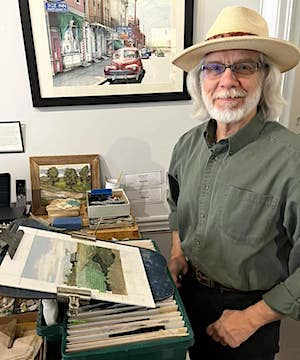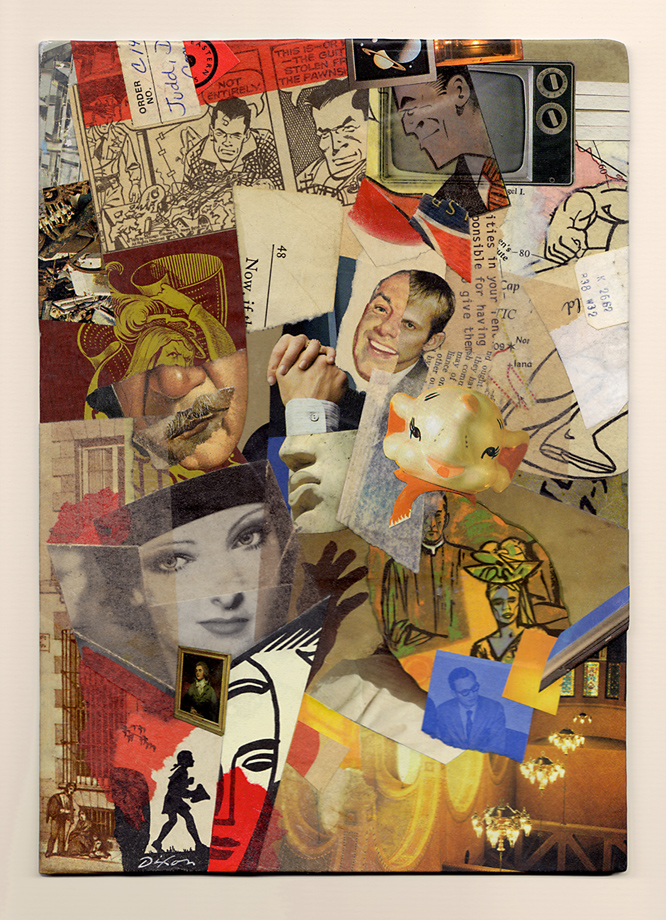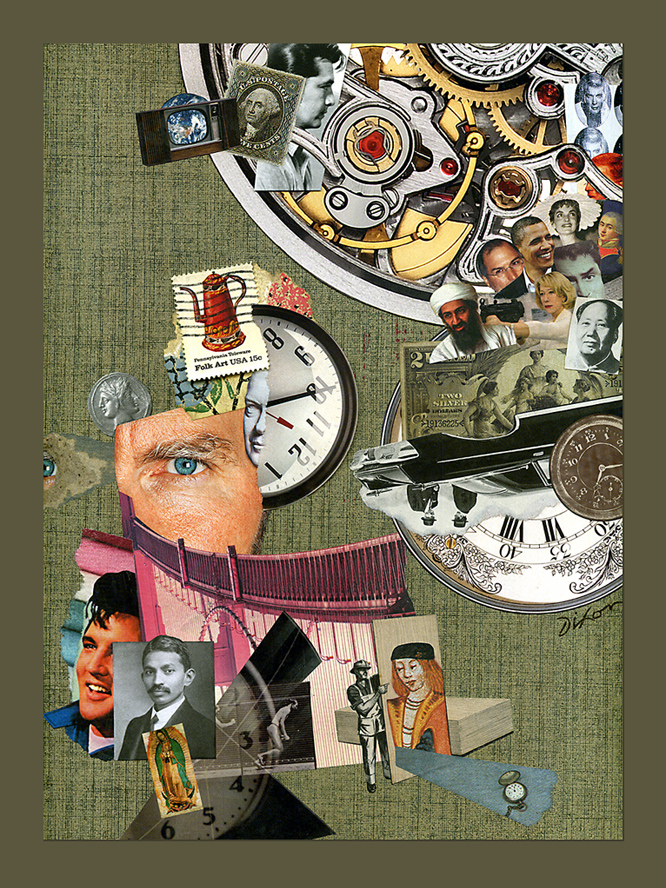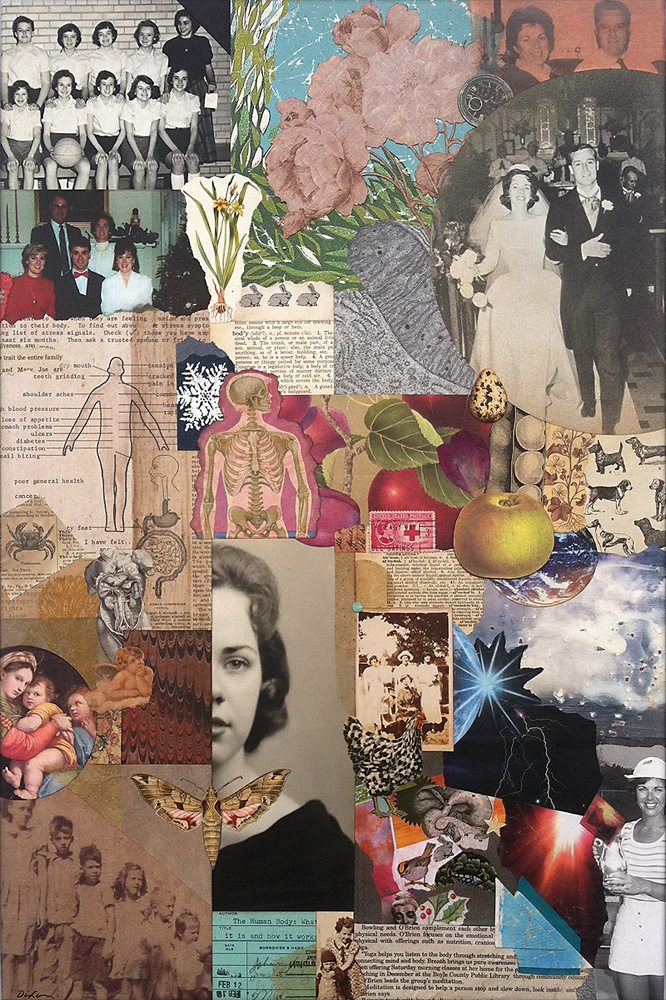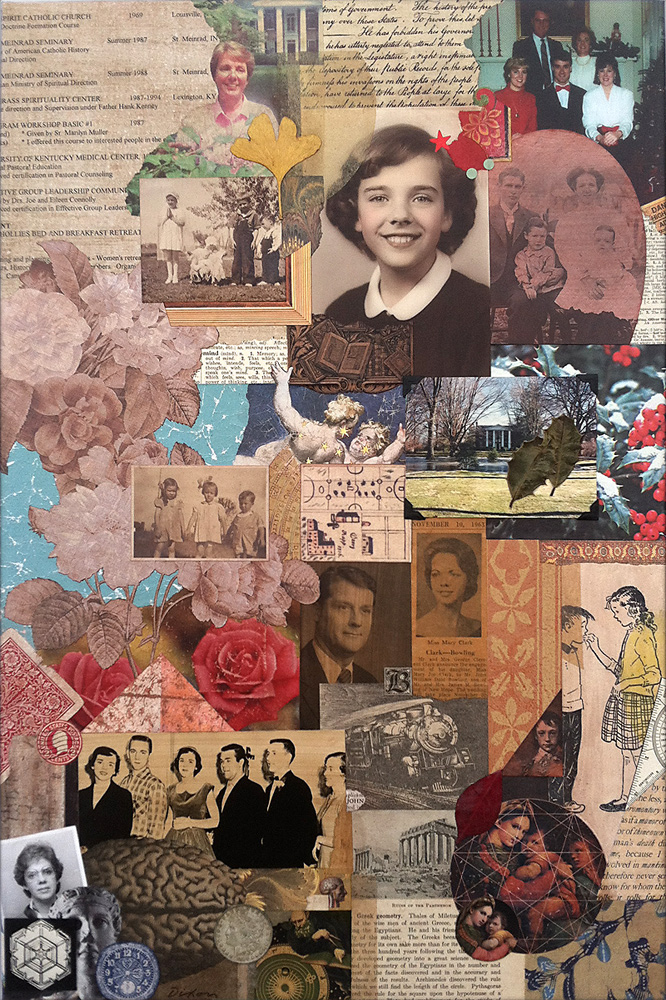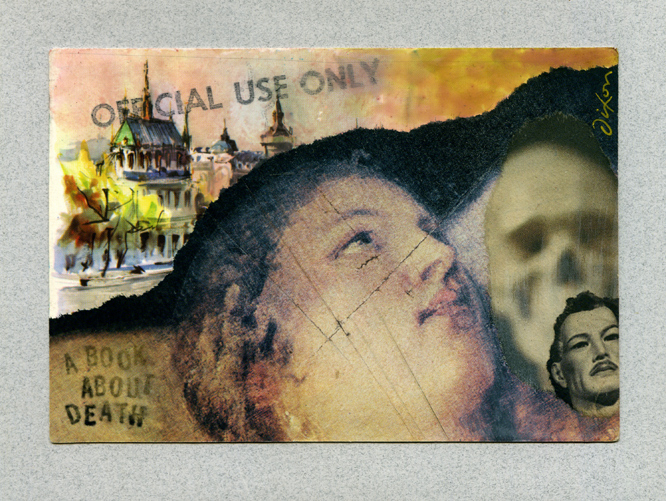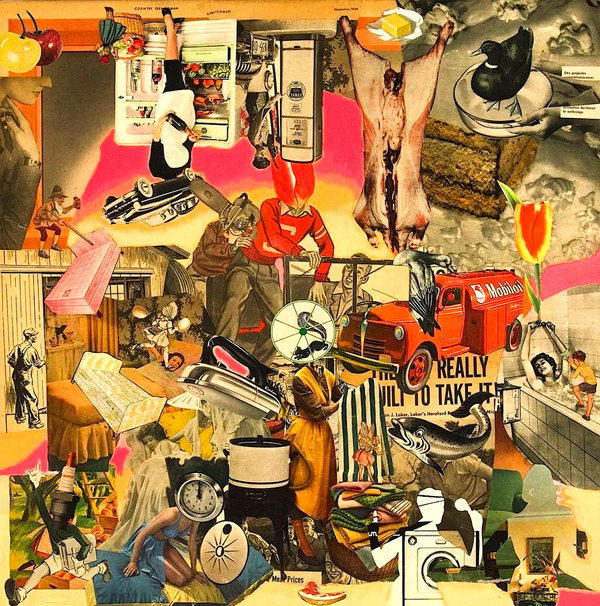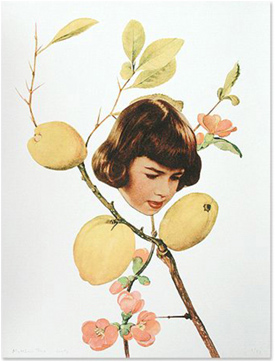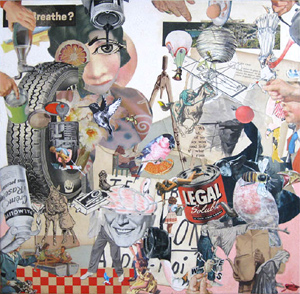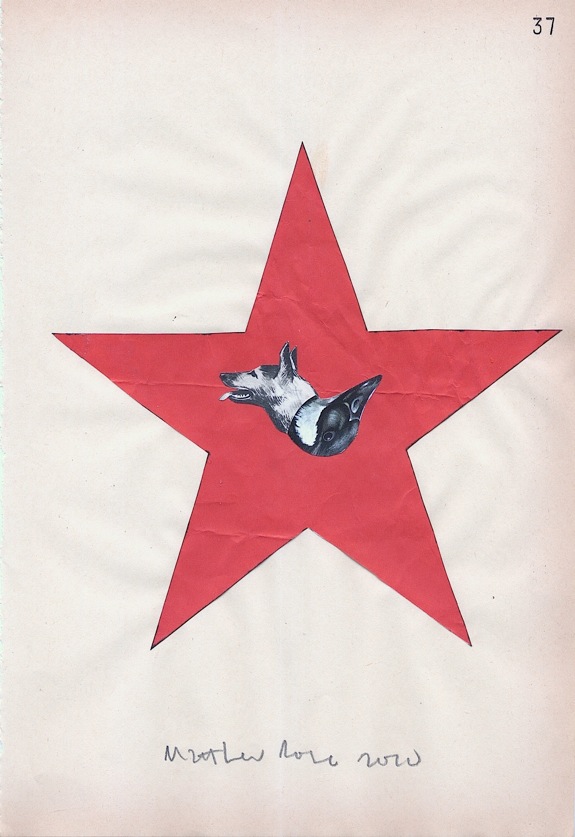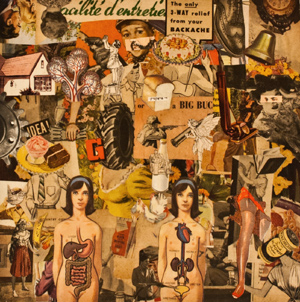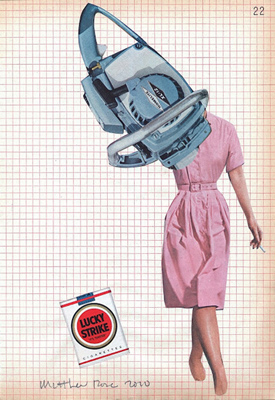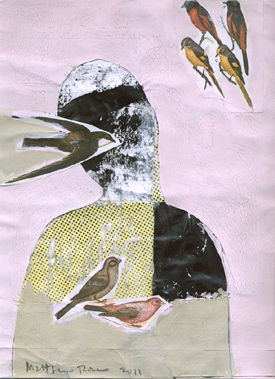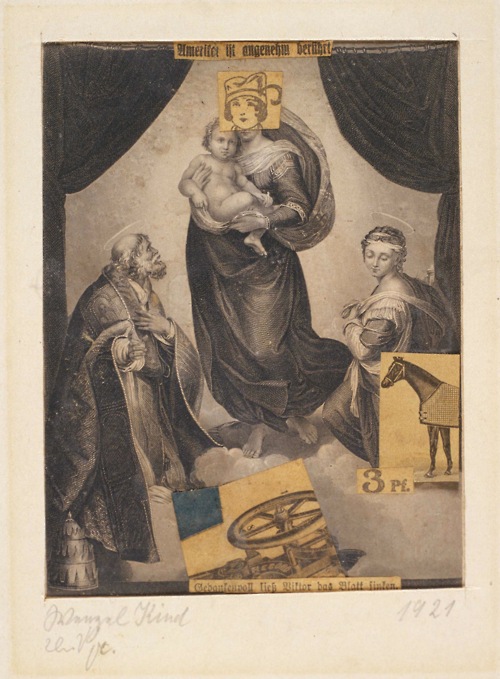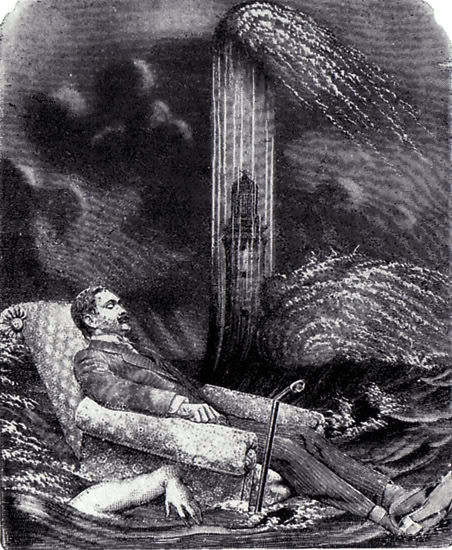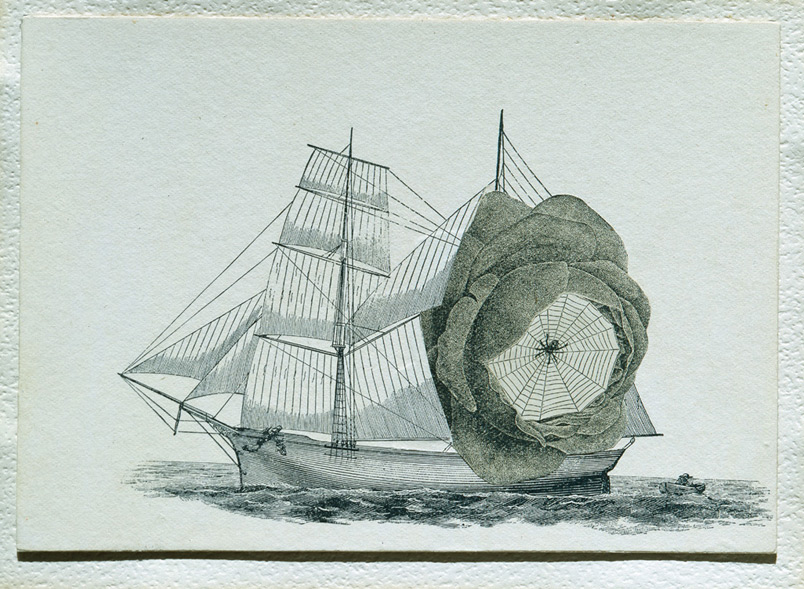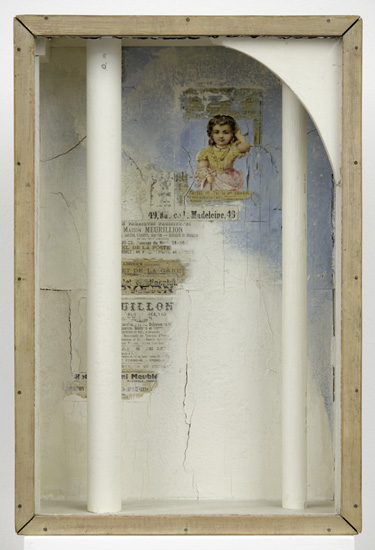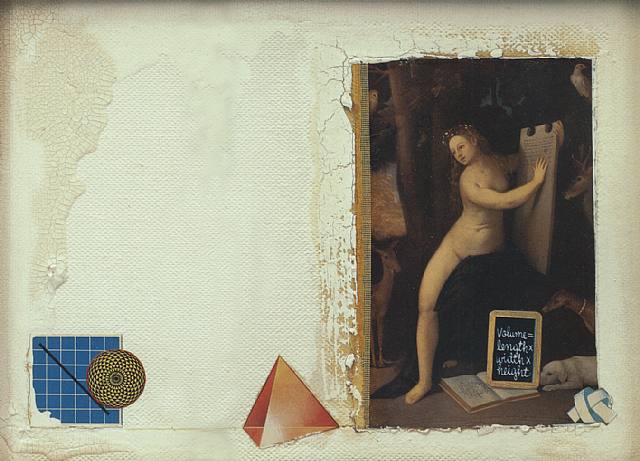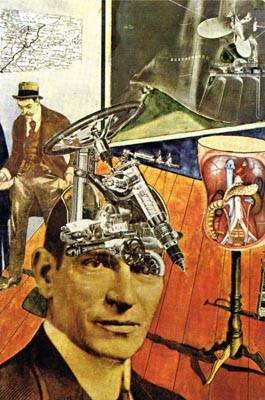Dixon appears again at Art Space Versailles, hopeful that a buyer might be interested in the collage artwork called Renewal.
I scheduled a double event this week and it was a fine way to saddle up and ride a momentum. I was eager to point out that Renewal was on consignment at Art Space Versailles.
The studio piece began with my musing on the cyclic life of trees, which makes sense because I’m endlessly fascinated by them and since I work primarily in papers after all. Most collage artists are scroungers at heart, so I had turned to my stash, searching for potential ingredients. I found more than enough for a 12×12-inch canvas and intuitively assembled a “ground” of these found images. I think that toward the end of the process it had became as much an abstract composition as an interpretation of my thematic idea. I didn’t want it to appear too abstract or purposely surreal, so, at the closing stage, I crafted a literal seedling from individual paper components, more in the representational manner that I use for collage en plein air. I guess one could say that the culminating element pictured the birth of a tree, but, as with all life cycles, who can say when the beginning or ending actually occurs. The art itself is re-purposed paper, a clear ending for a tree, at least until inevitable decomposition takes place, and then another cycle of renewal carries on.
In contrast, the exercise in spontaneity featured below had no preconceived intent and originated as a demo miniature during my exhibition-related workshop at Paul Sawyier Public Library in Frankfort on Tuesday. I refined and completed it last night during the appearance in Versailles as a guest artist. The unfinished piece had been immediately titled by a workshop participant after the primary ingredients were juxtaposed, and I just couldn’t top her suggestion!
It joins countless other artworks that tip the Pop-ist hat to Andy Warhol (Campbell’s Soup) or Ray Johnson (Lucky Strike). But the grandfather of Pop Art was Kurt Schwitters. So much of contemporary collage is, in essence, an homage to the German innovator, and I never tire of working in the Merz tradition that he pioneered a hundred years ago.

Kick the Can
collage experiment by J A Dixon
7 x 8.5 inches
